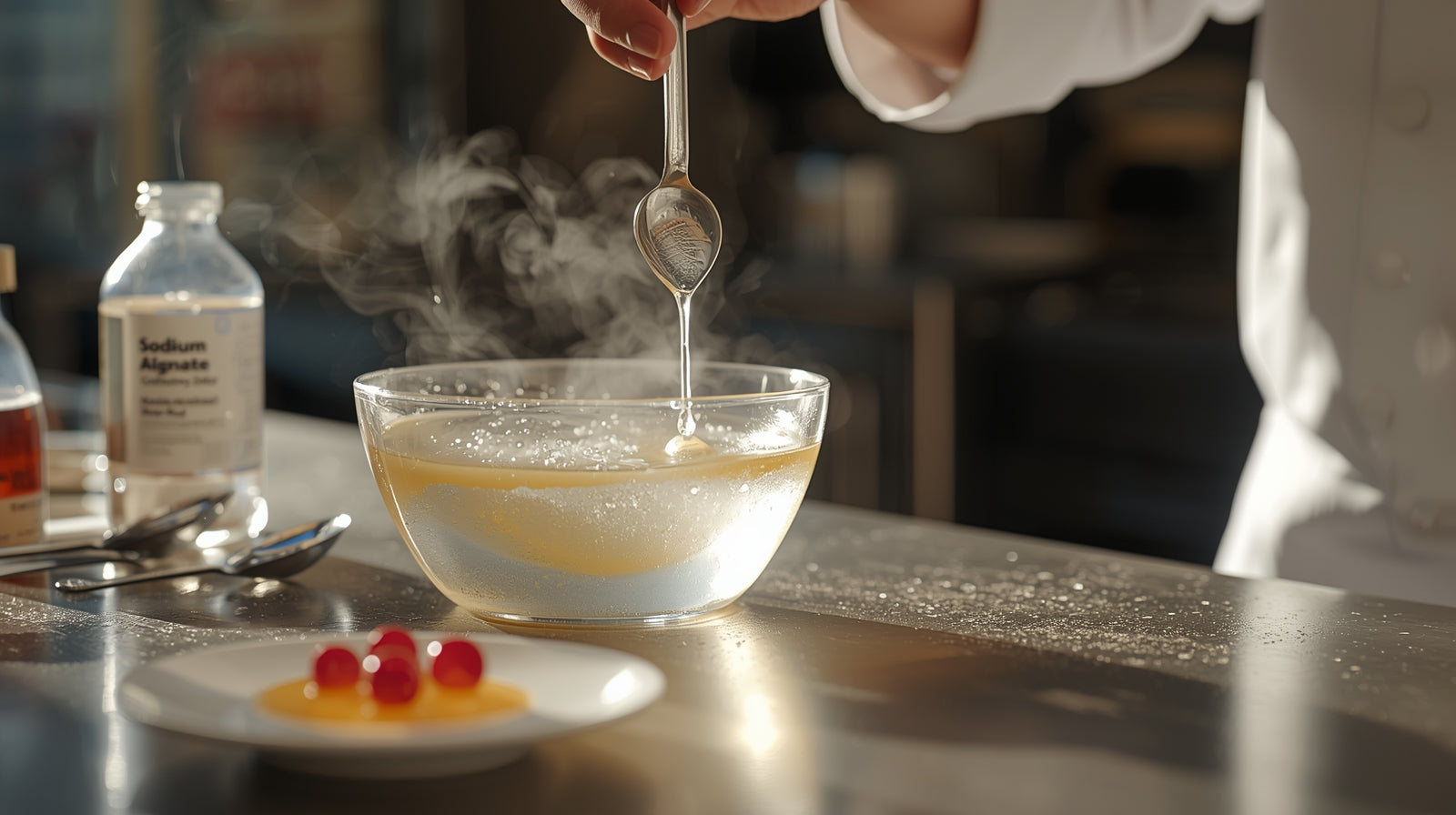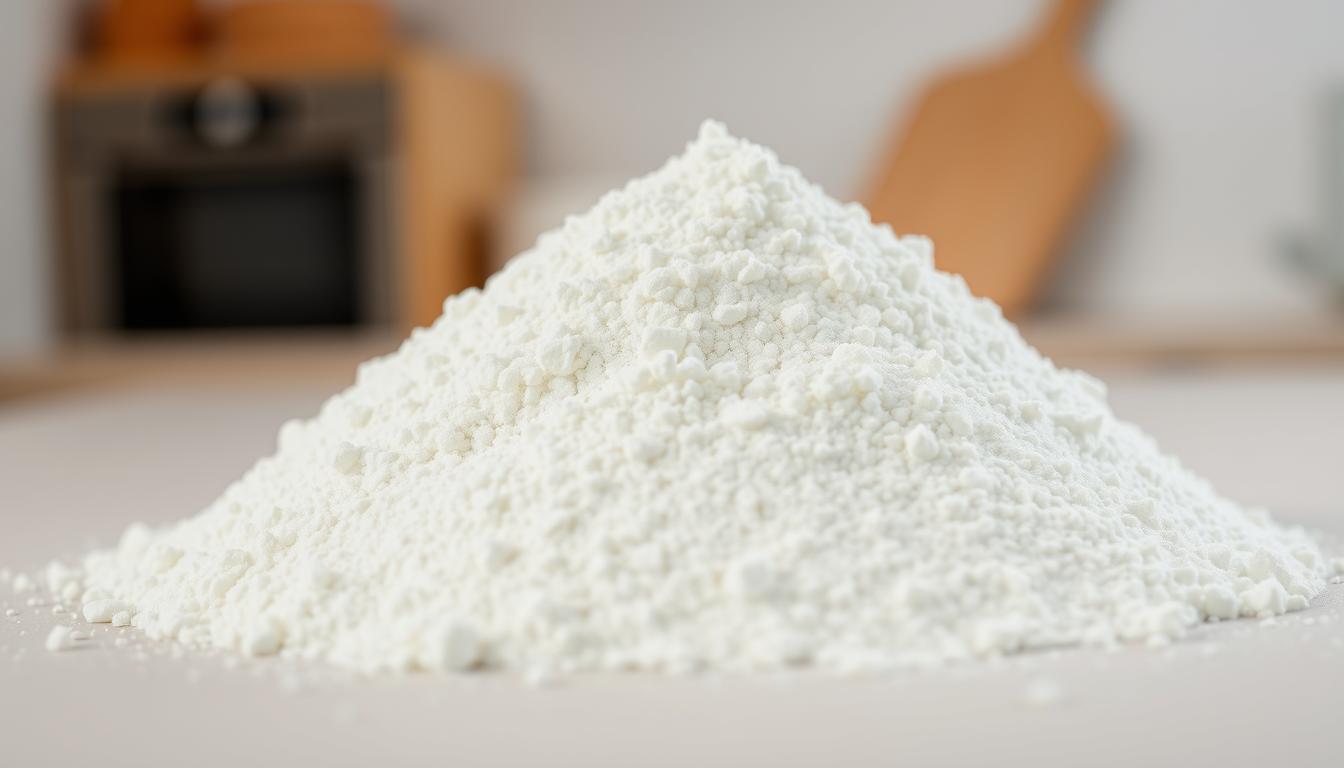
Ingredient Insights
SUBSCRIBE TO OUR BLOG
Promotions, new products, and recipes.
Welcome to "Ingredient Insights" - Your Go-To Source for Culinary Queries!
Greetings, food enthusiasts!
We are thrilled to introduce a brand-new feature on our blog: "Ingredient Insights." As we cater to a global community of passionate home cooks, chefs, and food lovers, we often receive a myriad of intriguing questions about ingredients from around the world. From the basics of baking to the intricacies of exotic spices, our readers are eager to understand more about the building blocks of their favorite dishes.
"Ingredient Insights" is our response to this curiosity. On a regular basis, we'll dive into the questions you've sent us, providing detailed answers, tips, and recipes. Whether you're wondering about the best gelling agents for vegan desserts, the ideal way to use a unique herb, or the science behind your homemade ice cream, we've got you covered.
This regular feature will not only showcase the diverse interests and culinary challenges faced by our global audience but also serve as a platform for sharing knowledge and fostering a deeper appreciation for the ingredients that make our meals extraordinary.
Stay tuned as we explore the fascinating world of food one ingredient at a time, answering your questions and highlighting the universal love for cooking that connects us all.
Happy cooking!
Warm regards,
Chef Edmund

Welcome pmeiri58 from Israel
Question: Please provide a good recipe for lemon-ginger curd or preserve. Use as little sugar as possible. Thank you. I will be extremely grateful for a reply.
Answer: Here's a recipe for a low-sugar lemon-ginger curd. This version uses a small amount of honey as the sweetener, which gives it a nice, natural sweetness without adding too much sugar.
Low-Sugar Lemon-Ginger Curd
Ingredients:
- 3 large lemons (juice and zest)
- 1 tablespoon fresh ginger (finely grated)
- 1/4 cup honey (adjust to taste)
- 4 large eggs
- 1/2 cup unsalted butter (cut into small pieces)
Instructions:
- Prepare the Ingredients:
- Zest the lemons and finely grate the ginger.
- Juice the lemons to yield about 1/2 cup of lemon juice.
- Combine the Ingredients:
- In a medium heatproof bowl, whisk together the lemon zest, grated ginger, lemon juice, honey, and eggs until well combined.
- Cook the Mixture:
- Place the bowl over a pot of simmering water (double boiler method). Make sure the bottom of the bowl does not touch the water.
- Stir continuously with a whisk or a wooden spoon to prevent curdling. Cook until the mixture thickens, about 10-15 minutes. It should coat the back of a spoon.
- Add the Butter:
- Remove the bowl from the heat. Gradually whisk in the butter, one piece at a time, until fully melted and the curd is smooth.
- Strain the Curd (Optional):
- For a smoother texture, you can strain the curd through a fine-mesh sieve to remove any bits of zest or ginger.
- Cool and Store:
- Let the curd cool to room temperature. Transfer to sterilized jars and refrigerate. The curd will continue to thicken as it cools.
- Store in the refrigerator for up to 2 weeks.
Enjoy your homemade low-sugar lemon-ginger curd on toast, scones, or as a filling for cakes and pastries!
Warm regards,
Chef Edmund
Welcome Vineeta from Australia:
Question: I need to make a vegan freeze-thaw stable lemon gel. I used agar agar, lecithin powder, arrowroot powder and guar gum. What can I do to prevent syneresis?
Answer: That sounds like a tasty treat that you are whipping up. Let's see if I can help.
To prevent syneresis in a vegan freeze-thaw stable lemon gel, it's essential to understand the role of each ingredient you're using and how they interact, especially under freeze-thaw conditions. Syneresis, or the weeping of liquid from a gel, can be minimized with the right combination and proportions of gelling agents and stabilizers.
Here's a breakdown of the ingredients you mentioned with my suggestions:
Agar Agar:
- A potent gelling agent derived from seaweed, agar forms firm gels at relatively low concentrations and is excellent for creating vegan gels.
- However, agar gels can be brittle and prone to syneresis, especially under freeze-thaw conditions.
Lecithin Powder:
- An emulsifier that helps to blend fats with water, improving the texture and mouthfeel.
- It doesn't directly contribute to gel structure or stability under freeze-thaw conditions but helps in evenly distributing flavors and other hydrophobic ingredients.
Arrowroot Powder:
- A starch used as a thickener, it provides a smooth texture but doesn't form a strong gel on its own.
- It can help improve mouthfeel and might contribute to reducing syneresis by thickening the water phase, but it's not a primary tool for this purpose.
Guar Gum:
- A thickener and stabilizer that can help prevent syneresis by increasing the viscosity of the water phase, making it less likely to weep from the gel.
- Guar gum can provide freeze-thaw stability in certain formulations.
Now, My Suggestions to Prevent Syneresis:
- Review Ratios:
- Ensure the ratios of gelling agents and stabilizers are optimized for freeze-thaw stability. Too much or too little of any component can lead to syneresis.
- Consider Xanthan Gum:
- Xanthan gum can improve freeze-thaw stability and help prevent syneresis when used in combination with other gelling agents like agar. It provides elasticity and flexibility to gels, which might be beneficial in your case.
- Experiment with Carrageenan:
- Specifically, kappa carrageenan, which forms strong, rigid gels in the presence of potassium ions. It can be more freeze-thaw stable than agar in some applications and might reduce syneresis. However, it's worth noting that carrageenan has been a subject of health-related discussions, so consider your audience.
- Modify Your Agar Concentration:
- If you're set on using agar, consider slightly increasing its concentration to see if it improves the gel's stability through freeze-thaw cycles. Be cautious, as too much agar can lead to an unpleasantly firm texture.
- Use a Blend of Stabilizers:
- Using a combination of guar gum and xanthan gum can provide synergistic effects, improving the texture and stability of the gel without the need for high concentrations of either.
- Optimize pH:
- The acidity of lemon can affect the gelling ability of agar and other hydrocolloids. Ensure the pH is within an optimal range for the gelling agents you're using.
Trial and Error:
- Unfortunately, there's no one-size-fits-all solution, and achieving the perfect balance may require experimentation. Small-scale trials with different combinations and ratios of ingredients can help identify the best formulation for your needs.
But you can do it, Vineeta. It just takes a bit of time and then it becomes your secret recipe.
So, Vineeta, in summary, consider adjusting the ratios of your current ingredients, experiment with additional stabilizers like xanthan gum, and possibly incorporate or substitute with kappa carrageenan for improved freeze-thaw stability. Each ingredient plays a unique role in the gel's texture and stability, and finding the right balance is key to preventing syneresis.
Warm regards,
Chef Edmund
Welcome Lucy from Rwanda
Question: I am busy doing a science project. I have chosen to test which ice cream flavor melts the best. Do you have anything I could use? Thank you so much.
Answer: Testing which ice cream flavor melts the best can be a fun and informative experiment. Here’s a simple experimental setup and procedure you can follow:
Materials Needed:
- Different Ice Cream Flavors: Choose a variety of flavors (e.g., vanilla, chocolate, strawberry, etc.).
- Digital Scale: To measure the amount of melted ice cream.
- Timer: To keep track of time intervals.
- Thermometer: To monitor room temperature.
- Bowls or Plates: To hold the ice cream samples.
- Spoon or Scoop: For serving equal amounts of ice cream.
- Notebook and Pen: For recording observations and results.
Procedure:
- Preparation:
- Ensure all ice cream flavors are stored under the same conditions before the experiment.
- Prepare a controlled environment where the room temperature is consistent.
- Set Up:
- Scoop an equal amount of each ice cream flavor into separate bowls or plates. Use the digital scale to ensure uniformity in weight (e.g., 100 grams each).
- Record the initial weight of each ice cream sample.
- Start the Experiment:
- Place the bowls or plates on a flat surface in the controlled environment.
- Start the timer.
- Observation Intervals:
- At regular intervals (e.g., every 5 minutes), observe and record the state of the ice cream (solid, partially melted, fully melted).
- Measure and record the weight of the melted portion using the digital scale.
- Data Collection:
- Continue observing until all samples are fully melted.
- Record the total time taken for each flavor to completely melt.
- Analysis:
- Compare the melting times of different flavors.
- Analyze the data to determine which flavor melts the fastest and which one retains its form the longest.
Considerations:
- Consistency in Serving Size: Ensuring each sample is of the same size is crucial for accurate results.
- Environmental Control: Conduct the experiment in a place with stable temperature and minimal airflow to avoid external factors affecting the melting process.
- Repetition: Repeat the experiment multiple times to ensure the reliability of the results.
Example Data Collection Sheet:
|
Flavor |
Initial Weight (g) |
Time to Partially Melt (min) |
Time to Fully Melt (min) |
Final Melted Weight (g) |
|
Vanilla |
100 |
|||
|
Chocolate |
100 |
|||
|
Strawberry |
100 |
|||
|
Mint |
100 |
|||
|
... |
By following this procedure, you can systematically determine which ice cream flavor melts the best and understand the factors influencing the melting rate.
Good luck with your project.
Warm regards,
Chef Edmund
This regular feature will not only showcase the diverse interests and culinary challenges faced by our global audience but also serve as a platform for sharing knowledge and fostering a deeper appreciation for the ingredients that make our meals extraordinary.
We invite you to submit your ingredient questions, no matter how simple or complex. Our team of culinary experts will do their very best to provide thorough and insightful answers.
Stay tuned as we explore the fascinating world of food one ingredient at a time, answering your questions and highlighting the universal love for cooking that connects us all.
Thought that was fascinating? Here’s another story you might like:
See: The Hydrocolloid Glossary
For further reading:
Wax On, Bacteria Off - A New Era for Produce Preservation
Every dish deserves the perfect texture to complement its flavors. Why settle for anything less than perfection? With Cape Crystal Brands Food Texture products, you don't have to. Whether you're crafting velvety sauces, glistening gels, or fluffy mousses, our range ensures you get the consistency you desire every single time.
Don't just cook—create masterpieces. Dive into the world of culinary textures and elevate every meal. Shop now and experience the magic of Cape Crystal!
🛍️ Click Here to Explore Cape Crystal Brands Food Texture Products!

Chef Edmund
Edmund McCormick is the founder of Cape Crystal Brands and EnvironMolds LLC. He is the author of several non-fiction “How-to” books, past publisher of the ArtMolds Journal Magazine, editor of Beginner's Guide to Hydrocolloids, and author of six eBook recipe books available for download on this site. He resides in Far Hill, NJ and lives and breathes his food blogs as both writer and editor. You can follow him on Twitter and Linkedin.

|
About the Author Ed is the founder of Cape Crystal Brands, editor of the Beginner’s Guide to Hydrocolloids, and a passionate advocate for making food science accessible to all. Discover premium ingredients, expert resources, and free formulation tools at capecrystalbrands.com/tools. — Ed |
Enjoyed this post? Subscribe to The Crystal Scoop
Food-science tips, ingredient know-how, and recipes. No spam—unsubscribe anytime.
- Choosing a selection results in a full page refresh.





